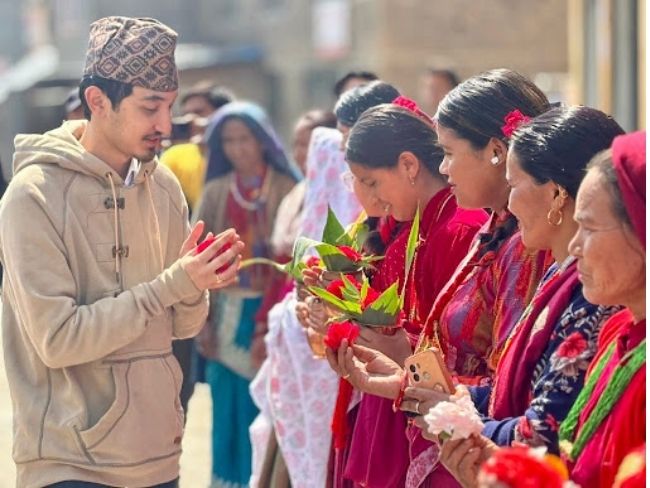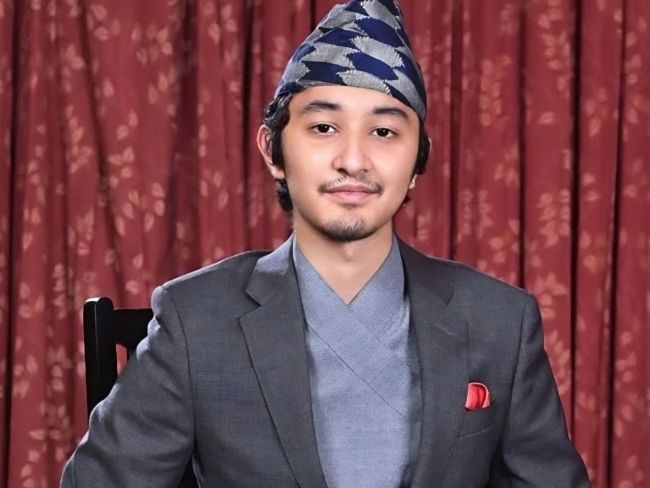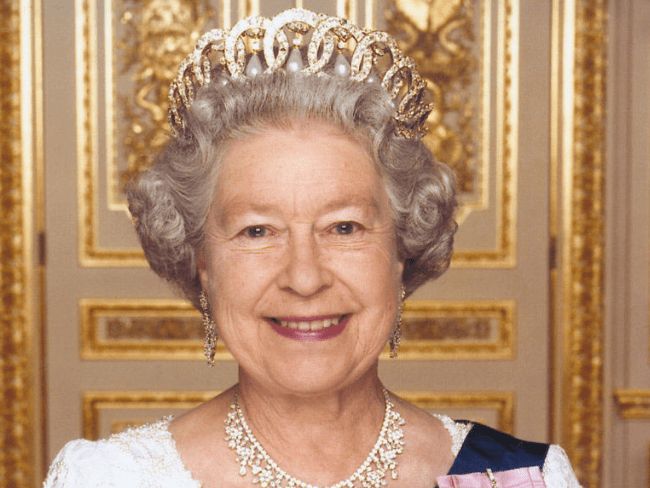Prince Hridayendra Shah was born on 30 July 2002 at the Narayanhiti Royal Palace in Kathmandu. He is the only son of Crown Prince Paras and Crown Princess Himani and the grandson of King Gyanendra. His childhood was surrounded by royal ceremonies, traditions, and a time of political change in Nepal.
Today, Hridayendra lives a private life away from the public spotlight. He is studying abroad while quietly carrying the legacy of Nepal’s former royal family.
Quick Facts:
- Full Name: Hridayendra Bir Bikram Shah Dev
- Date of Birth: 30 July 2002 (age 23)
- Place of Birth: Narayanhiti Royal Palace, Kathmandu, Nepal
- Father: Paras Bir Bikram Shah Dev (Crown Prince)
- Mother: Himani Rajya Lakshmi Devi Shah (Crown Princess)
- Grandfather: King Gyanendra Bir Bikram Shah Dev
- Dynasty: Shah Dynasty
- Education: Lincoln School in Kathmandu; currently pursuing master’s in the U.S.
- Former Title: Nava Yuvaraj (Crown Prince until monarchy abolished)
- Current Residence: Lives abroad, mainly between Singapore and the U.S.
Early Life and Royal Ceremonies
Hridayendra’s birth came just a year after the tragic Royal Palace Massacre of 2001, which left the Shah dynasty shaken. As a result, monarchists welcomed his arrival with optimism, since he was the only male heir of the next generation.
In early 2003, Narayanhiti Palace honored him with the Annaprasan (rice-feeding ceremony), which prominent political leaders, priests, and diplomats attended. Soon after, he appeared publicly at several traditional events, including temple visits in Kathmandu, reinforcing the royal family’s spiritual connection to the nation.
Line of Succession
Before 2008, Hridayendra was second in line to the throne, after King Gyanendra. In 2006, talks about changing succession laws put him in the spotlight. A plan for equal rights between sons and daughters could have made his sister Purnika next in line, but a special rule kept Hridayendra’s place.
Some political groups and commentators even suggested skipping his father, Paras, and making Hridayendra a young symbol for a constitutional monarchy. This idea never happened.
Abolition of the Monarchy & Transition to Private Life
On 28 May 2008, the monarchy was officially abolished, and Nepal became a secular, federal republic. At that time, Hridayendra was just 5 years old.
Following this change, the royal family vacated Narayanhiti Palace. Consequently, Hridayendra spent much of his youth abroad, including time in Singapore, to be closer to his father. Over time, his life transitioned from public pageantry to private schooling and international education.

Education & Current Life
Hridayendra began his education at Lincoln School in Kathmandu before studying abroad. Recent reports show he has completed his undergraduate degree and is now pursuing a master’s in Boston, USA.
He generally stays out of the public eye and avoids politics but occasionally attends events organized by his mother’s charity, the Himani Trust. In early June 2025, he traveled with his mother to western Nepal. They visited Jumla via Nepalgunj to lay the foundation stone for a new birthing center, see Rara Lake, and take part in religious ceremonies. While the trip created excitement among monarchist supporters, Hridayendra made no public statements or political moves.
Public Image and Perceptions
Supporters of the monarchy view Hridayendra as a polite, well-educated, and controversy-free representative of the Shah lineage. He avoids Nepal’s past political scandals, and his youth and dedication to studies create an image of dignity and neutrality.
Some monarchists privately hope he could serve as a bridge figure should any restoration movement gain momentum. For now, however, he remains outside active public life.
Future Outlook
Hridayendra’s future is still uncertain. Currently, he shows no interest in political or ceremonial leadership in Nepal. Instead, he focuses on education and personal growth, which could lead to a career in diplomacy, academia, or philanthropy rather than politics.
If Nepal ever considers a constitutional monarchy, Hridayendra could become a modern, internationally educated figurehead appealing to younger generations. Otherwise, he may continue living and working abroad while supporting Nepal through his family’s cultural and charitable work.
Because he is reserved and appears in public only occasionally, any role he chooses is likely to be careful and low-profile, very different from some past royal figures.
Conclusion
Prince Hridayendra Bir Bikram Shah Dev is a living link between Nepal’s monarchical past and its republican present. Born into royal privilege but raised in a world where that privilege no longer defines governance, his life is shaped by both tradition and adaptation.
Whether he eventually steps into a public role or continues building a quiet professional life, Hridayendra represents a chapter of Nepal’s history that remains vivid in public memory and a potential part of its unfolding future.





Comments are closed